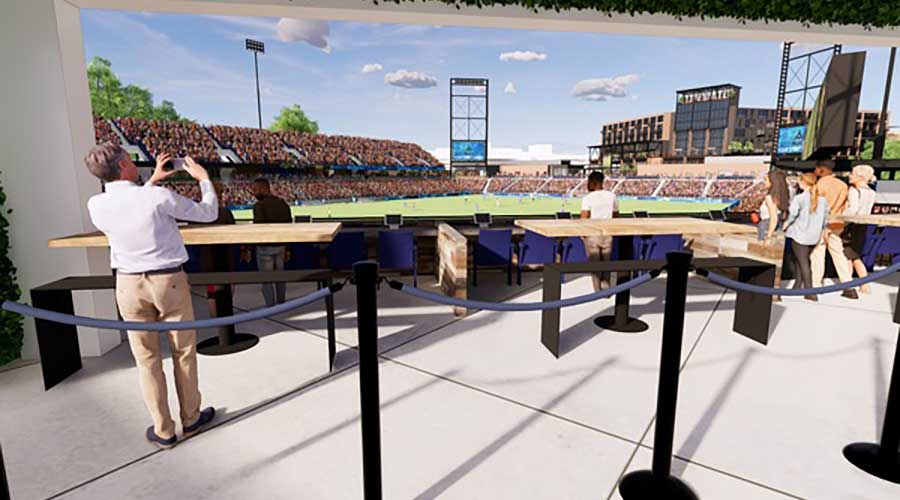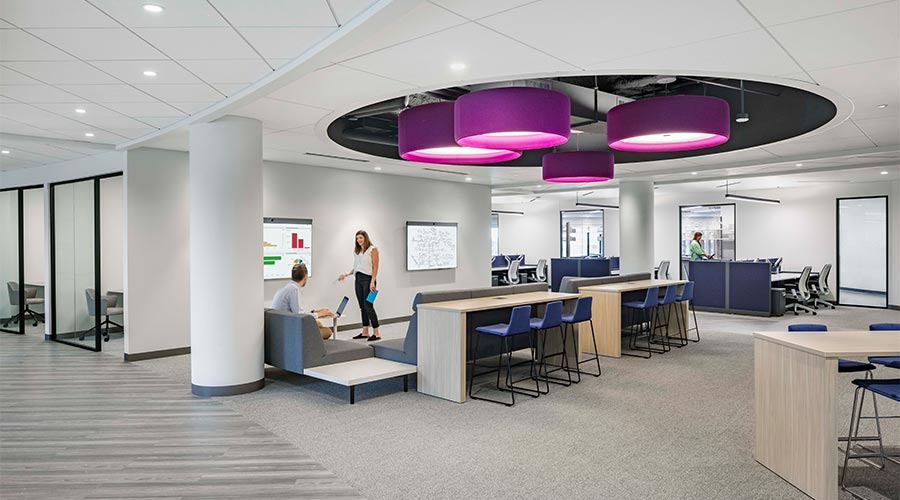Soccer Stadium Trends Include Flexible, Future-Focused Designs
As the U.S. prepares to co-host the 2026 World Cup, newer soccer stadiums lean into key elements.
By Annie Celentani, Contributing Writer
With the 2026 FIFA World Cup approaching, soccer’s popularity in the U.S. is at an all-time high. Over 14 million people in the United States played outdoor soccer in 2023, and the total revenue of the U.S. Soccer Federation was over $192 million in 2024 — an increase of over 30 percent from 2023. American kids are playing more high school soccer, the best players are joining European leagues, and soccer’s U.S. fanbase is skyrocketing.
As the sport's U.S. presence surges, better soccer venues are in demand as the sport’s U.S. presence surges. Top-of-the-line designs for high school, college and professional facilities are important for attracting the best recruits and making revenue flow. For players, fans, professional team owners and communities to reap the benefits of high-dollar venues, design must cater to the evolving needs of all.
Trending now
Sports venues at the pro, college and even high school level are among the most high-profile facilities in their areas. JCJ Architecture, one of the country’s leading architecture and interior design firms focusing on building fan-centric, flexible and sustainable sports venues, feels stadium upgrades are a popular trend.
“We’re seeing an emphasis on state-of-the-art facilities and amenities,” says Christine O’Hare, RA and senior project manager. “Strength and conditioning areas and sports performance spaces, including wellness-focused areas, are a major priority.”
Other design trends for stadiums include positioning coaches’ offices and conference rooms to overlook the venues. Using sustainable, energy-efficient materials is also critical for designers and building owners.
The increasing adoption of LED lighting, for example, yields “drastically lower energy use, reduced toxicity, and longer lifespan,” says Dustin Lombardi, AIA and senior project architect.
For other design trends, JCJ sees clients opting for:
- Lightweight, translucent roofing materials to reduce structural burden and decrease the need for artificial lighting
- Solar panels or geothermal heating and cooling
- Organic infill turf as a safer, non-toxic and biodegradable base for fields
- Water-conserving designs and locally sourced materials
- Retrofitting old buildings for reuse rather than demolishing existing resources.
Multi-purpose stadium trends
Professional soccer stadiums are emerging in popularity and becoming part of communities beyond sports.
For multi-use functionality, “location is everything when it comes to maximizing the potential of a stadium as a year-round hub,” says James LaPosta, FAIA, LEED AP, principal and chief architectural officer. “Facilities situated in walkable, transit-accessible, urban environments are simply better positioned to serve as multi-use destinations. When the stadium is embedded in the fabric of the community, it becomes a natural venue for everything from fundraisers to festivals.”
Emphasis on accessible socialization areas rather than expensive suites is another shifting design trend.
“Younger generations want elevated food and drink options, but also value spaces where they can mix and socialize in larger groups. These flexible club spaces are now seen as revenue-generating assets that can host a wide range of events, from bar mitzvahs, and school or not-for-profit annual galas to corporate gatherings” says Peter Stevens, LEED AP, and president. “Designing with future adaptability in mind is imperative.”
Profitable stadium design is multifaceted, requiring focus on everyone in and around the venue. Creating a “wow” factor for each fan in the stadium through convenience and personalization is non-negotiable.
“It’s important to embrace multiple tiers of premium experiences, whether it’s a single club-level ticket that gives fans access to elevated amenities like a bar or lounge, or more immersive suites and VIP zones….Inclusivity goes beyond accessibility- it’s about making everyone feel like they belong, from regular fans to first-timers and families to neurodiverse guests,” LaPosta says.
Having more experiences for fans increases monetization throughout the venue and improves showcasing of branding and sponsorships. “Sponsorship is being woven into the fabric of the venue,” with features like branded tent suites, perimeter advertising and jersey signage, notes O’Hare. Stevens adds that venues are beginning to mirror the “European model, where company branding is central to the club’s identity.”
With the cell phone shaping the modern gameday experience, the best venue designs bring social media to the jumbotron and implement intuitive wayfinding, grab-and-go food zones, real-time concession stand crowd level monitoring and more to deliver a seamlessly tailored fan experience. “Ultimately, the intersection of architecture and digital experience is about giving fans control, flexibility, and connection,” O’Hare says.
With the shift to the international soccer calendar on the table and venues taking on multiple community functions, U.S. high school, collegiate and professional soccer venues designed in line with current trends can expect to enjoy soaring profitability in years to come.
Annie Celentani is a freelance writer based in Wauwatosa, Wisconsin.
Related Topics:












